Syn.: Pectanisia phyteuma (L.) Raf., Reseda litigiosa Sennen et Pau, Reseda aragonensis Loscos et J. Pardo
Family: Resedaceae S. F. Gray
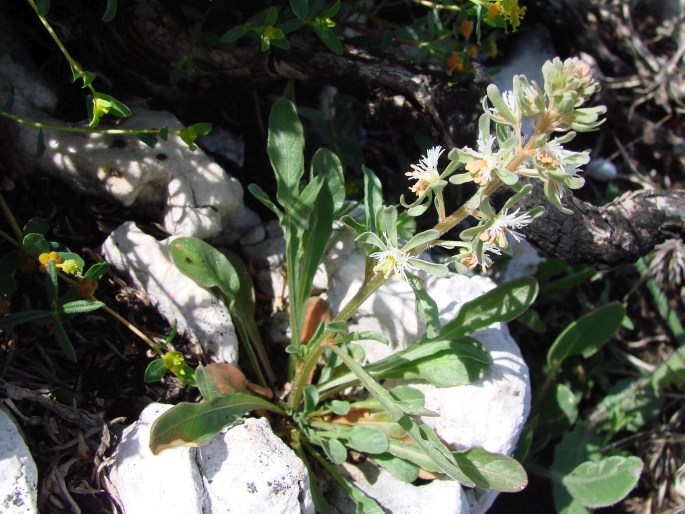
Distribution: Mediterranean region and southern part of Central Europe, eastward to the Caucasus, northward to Czechia. It was introduced to North America (New York and Pennsylvania), southeastern Australia and Chile.
Ecology: It grows on rocky hillsides, in fields, pastures, and old vineyards, also in disturbed sites. It blooms from April to September.
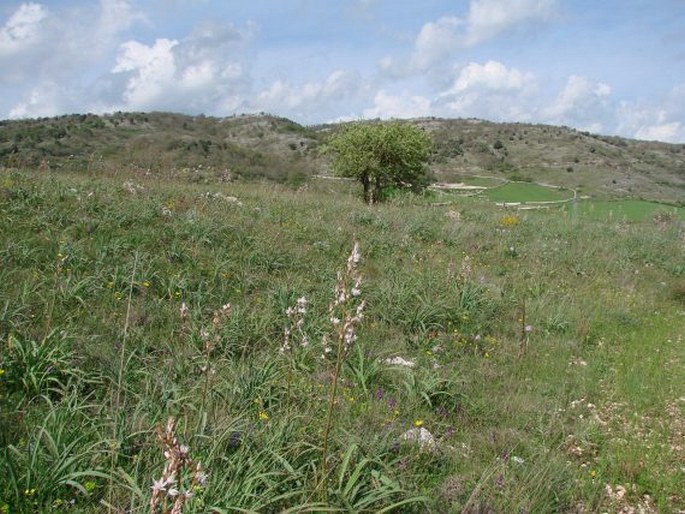
Description: Annual to short-lived perennial herb, 10–20(–50) cm tall, with ascending branches near the base. Leaves spathulate, long-cuneate, sometimes with 1(–2) lobes on each side (leaf-shape is very plastic), 50–100 × 5–15 mm. Flowers in terminal, bracteate racemes; bracts 2.5–3 mm; sepals 6, 3–5(–13) × 1–3.5 mm; petals 6, 3–5 mm long, clawed, the two upper with limb 3-lobed, the lateral lobes pinnatifid, each with 5–9 linear-oblanceolate segments, white. The fruit is a capsule, 13–14 mm long, nodding.
Threat and protection: The Rampion Mignonette is protected by law in Czechia and Slovakia.
Use: It was grown in southern Europe as a medicinal herb and as a vegetable.
Note: The genus contains about 60 species, which are native in Africa, Asia and Europe.
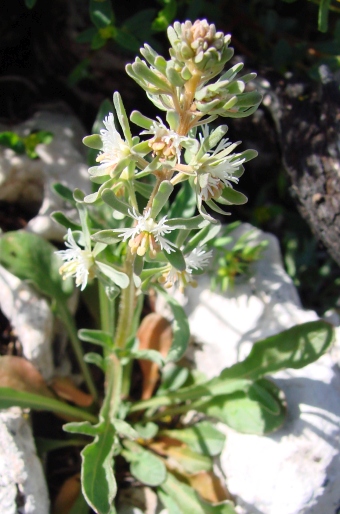
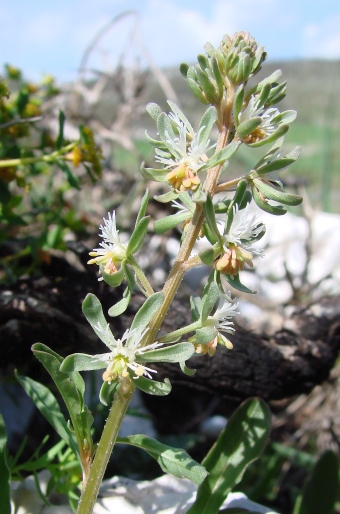
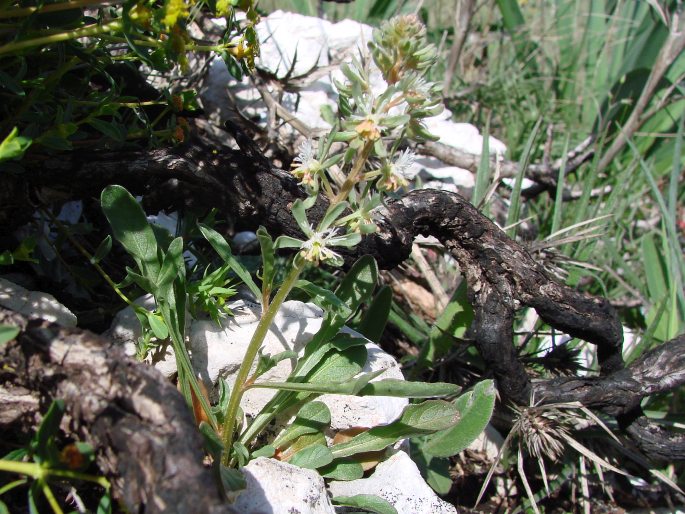
These images were taken in Italy, Gargano, Valle Carbonara (April 18, 2008).


